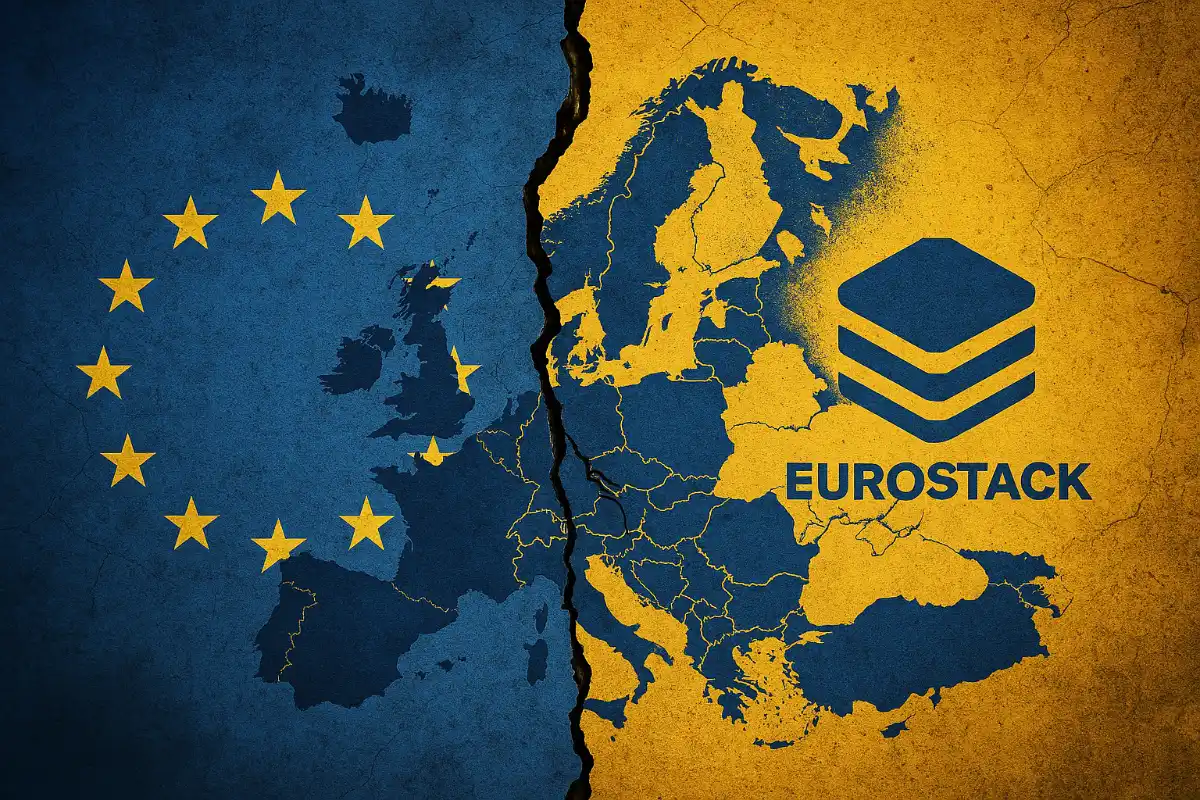Can Europe Build Its Own Stack? A Reality Check on EuroStack
Europe’s digital stack still runs on foreign systems. The EuroStack vision promises digital sovereignty but delivery is stalled by market dominance, missing infrastructure and political hesitation.

Europe’s grand technological ambition has a name: EuroStack. The vision is bold: to create an entirely sovereign digital infrastructure spanning cloud services, computing power, artificial intelligence, semiconductors and communications networks. At first glance, the logic seems impeccable: reduce foreign dependencies, strengthen digital resilience and build systems that align with European values. The reality, however, reveals a project mired in contradictions.
The Infrastructure Bottleneck
Across every layer of the technology stack, Europe finds itself trapped in stubborn dependencies that resist political solutions. Despite growing interest in homegrown cloud providers like OVH , T-Systems and Scaleway , the market remains firmly in the grip of American tech giants. AWS, Microsoft Azure and Google Cloud continue to dominate, leaving European alternatives fighting for scraps.
Our website does not collect, store, or share any user data. If you enjoy our content and value your privacy, consider supporting us.
The computing infrastructure bottleneck is particularly severe. Europe’s AI firms find themselves in the awkward position of renting GPU capacity from the very American platforms they’re supposedly trying to escape. Without access to advanced chips, which are almost entirely sourced from US companies like NVIDIA, European digital sovereignty remains more aspiration than reality.
The AI sector exposes these contradictions most starkly. While Brussels positions itself as the global regulatory leader with the AI Act , it hasn’t backed these ambitions with matching infrastructure investment.
Europe’s most promising foundation model startups, Mistral AI and Aleph Alpha , remain heavily dependent on American hardware and cloud services. There simply isn’t a European equivalent to the massive GPU access that Microsoft provides to OpenAI. Without it, Europe’s AI champions fight with one arm tied behind their backs.
The Lack of Semiconductors
The semiconductor landscape tells a similar story. The €43 billion EU Chips Act represents serious intent, but the gap remains wide. Intel and TSMC are being courted to build fabs on European soil, raising questions about digital sovereignty when control, IP and supply chains remain external. However, for Europe, the issue is less about complete independence and more about building sufficient local capacity to matter during future crises.
Design intellectual property presents another challenge, dominated by non-European firms like Synopsys and Arm . Despite Arm’s UK headquarters, it operates under foreign ownership and influence, limiting its potential role in a truly sovereign European stack. Manufacturing remains fragmented across the continent.
Whilst Europe excels in specific niches like ASML’s world-leading lithography equipment, this hasn’t translated into control of the broader supply chain. Having one excellent company doesn’t equate to having a complete ecosystem.
Communications infrastructure reveals similar challenges. European vendors Ericsson and Nokia maintain significant presence but have steadily lost ground globally. Despite restrictions on Huawei in parts of Europe, there’s no coherent roadmap connecting 5G/6G sovereignty with other infrastructure goals.
Too Many Plans, Too Little Delivery
The EuroStack vision encompasses a bewildering array of overlapping initiatives. Gaia-X for cloud infrastructure, EuroHPC for supercomputing, IPCEI for semiconductor funding, alongside a complex soup of regulatory frameworks including EUCS, NIS2 , the Data Governance Act and Digital Decade targets . It’s a landscape rich in strategy documents but desperately poor in practical delivery.
The central question remains largely unresolved: can Europe build something that functions both technically and commercially without falling back on the foreign providers it seeks to replace?
The evidence so far isn’t encouraging. Gaia-X has been plagued by internal disputes and credibility problems, particularly after allowing non-EU hyperscalers into discussions. Even government clouds in tech-forward nations like the Netherlands and France are built atop Microsoft and AWS infrastructure. European alternatives exist but remain comparatively tiny.
“The fact that important members are slowly withdrawing and that the funding is not flowing as originally planned is not a good sign,” one Gaia-X insider told CIO . “Confidence in the Gaia-X initiative is waning.”
Talent flows represent another structural challenge. Europe’s universities produce world-class research but the best engineers often migrate to American tech giants. Commercialisation lags and Europe’s internal market (fragmented by language, legal systems and procurement complexities) prevents startups from scaling efficiently.
A truly sovereign European stack would mean a startup could build, train, deploy and scale using exclusively EU-based infrastructure, software and talent. That scenario remains a distant fantasy today.
Market Realities and Political Will
Market realities make the challenge even more daunting. AWS, Microsoft and Google control over 70% of Europe’s cloud market . Meanwhile, European players like Deutsche Telekom and SAP struggle with around 2% each. The combined European market share actually fell dramatically from 26% to just 10% between 2017 and 2020, according to AI Now Institute research .
Meanwhile, American tech giants aren’t passive observers. They continue positioning themselves as essential infrastructure providers whilst actively lobbying to shape European regulations in ways that protect their dominance. Their ‘sovereign cloud’ offerings, despite the branding, often further entrench reliance on their platforms rather than building genuine European capacity.
The contrast couldn’t be starker: whilst EU policymakers craft high-minded policies about digital autonomy and sovereignty, US firms continue to expand their European footprint through market advantages, weak procurement rules and a striking lack of political will to back domestic alternatives with real funding or legal preference.
A successful EuroStack would represent a paradigm shift in Europe’s technological position. The question isn’t whether Europe can build isolated pieces of the puzzle- clearly, it can. The real challenge is whether Europe can commit to the massive, sustained investment and political cohesion needed to build a functional alternative to the existing American-dominated stack.
So far, the answer appears to be no. But with digital infrastructure increasingly fundamental to economic security and geopolitical power, Europe can ill afford to concede defeat. The coming decade will determine whether EuroStack becomes a functioning reality or joins the long list of grand European projects that promised much but delivered little.
Coming up: Can Europe compete in AI on its own terms? Subscribe to get the next piece.
